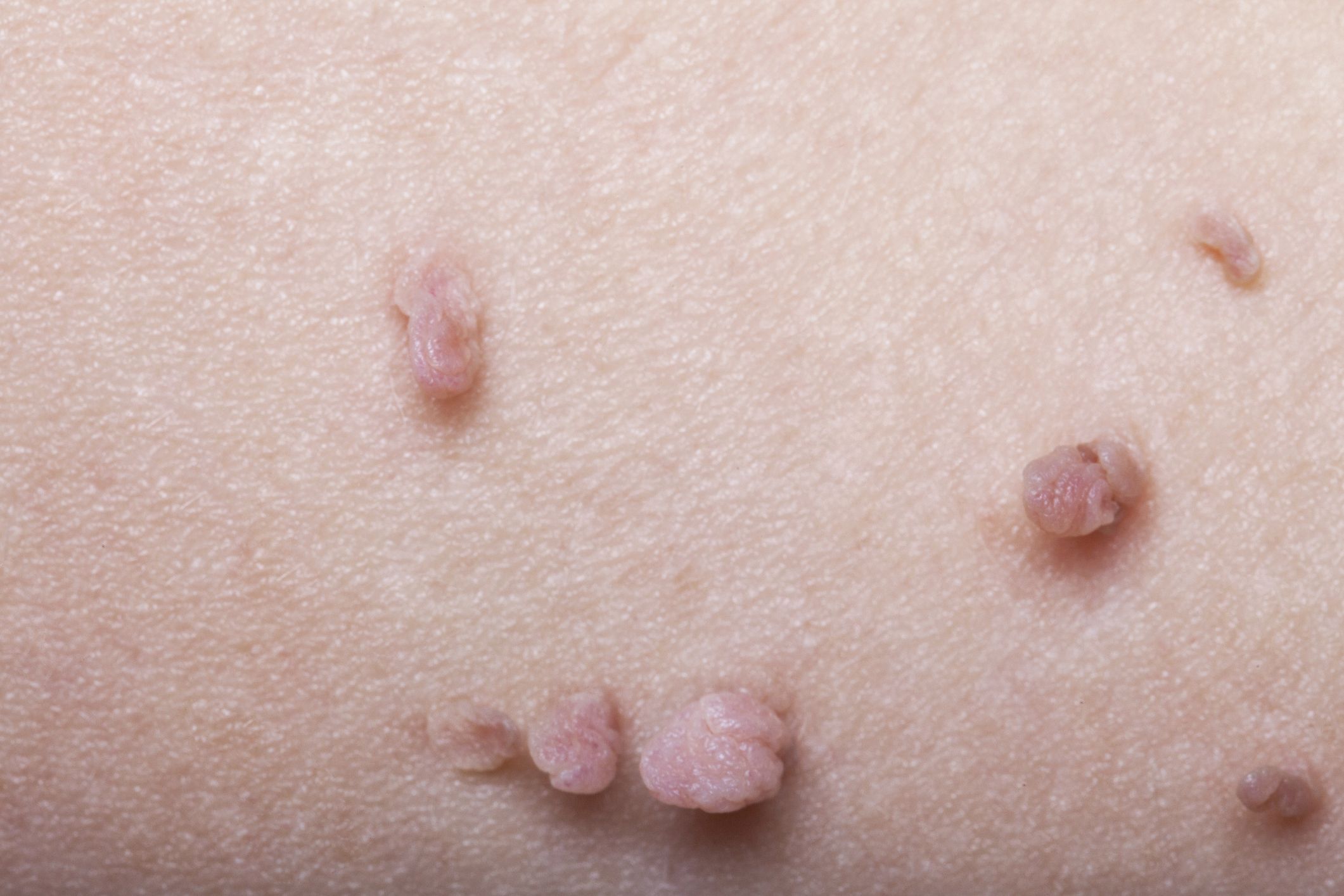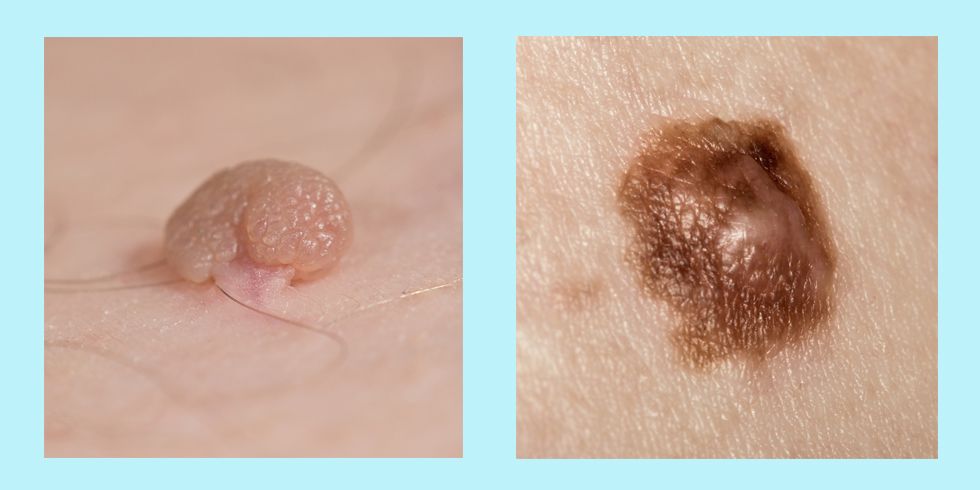Your skin can give you plenty of blemishes to stress over-moles, pimples, warts, you name it. Most skin spots are nothing to worry about, but that doesn’t mean they can’t still be annoying.
One of the most irksome? Skin tags.
But why do these fleshy growths pop up in the first place? And what’s the best way to get rid of them? Here’s what you need to know.
What is a skin tag, anyway?

“Skin tags are benign skin growths due to an ‘outpouching’ of the skin that is connected to the underlying skin,” says dermatologist Dr Sejal Shah. The result is a fleshy little growth that protrudes from your skin. Unlike a pimple or a cyst, which causes a raised area of skin, skin tags are attached to the surface of the skin via a thin stalk, giving them a kind of “wiggly,” tag-like appearance.
Skin tags (which are medically called “acrochordons,” if you want to get technical) are small but they can be pesky. The tags, which are flesh-coloured or a darker brown, are usually two to five millimetres in size, though they can sometimes get bigger. They often appear in clusters.
Generally, these growths are totally harmless, says Dr Shah, but they can easily become irritated and inflamed. People frequently complain about skin tags getting caught on clothing or jewellery-ouch.
What causes skin tags?
Dermatologists don’t really know what causes skin tags, but there are a few theories. What makes them annoying is that they typically grow in folds of skin or areas where there tends to be a lot of friction-think: armpits, neck, and groin. That might be why you see them pop up in skin folds, says Dr Shah.
They are also more common in overweight or obese individuals,” he adds, which the friction theory might help explain. Skin tags are also more common in people who have diabetes, adds dermatologist Dr Joshua Zeichner.
According to the American Academy of Dermatology, skin tags may be tied to too much insulin in the blood, and therefore a warning sign of diabetes. “There is also a likely a genetic component, because they tend to run in families,” says Dr Zeichner.
So, what does all of this mean for preventing skin tags? Unfortunately, there’s not much you can do beyond staying healthy. “Try to live a healthy life with a well-balanced diet, exercise, and keep your weight in check,” says Dr Zeichner. “If you are diabetic, make sure to control your blood sugar as well as possible.”
To keep an existing skin tag from getting irritated, try to reduce any friction there as much as possible.
So what’s the best way to get rid of a skin tag?
There are two main reasons you may want to remove a skin tag. “If a tag is large, painful, bleeding, or getting in the way with daily activities, you may be able to get the tag removed through your insurance,” says Dr Zeichner. However, plenty of people also get them removed simply because they don’t like the way they look (just note your insurance might not cover it for this reason).
No matter how big or small, skin tag removal means a trip to the derm. There are no topical treatments or natural remedies for shrinking them-“unfortunately once tags are there, the only way to remove them is a surgical option,” says Dr Zeichner.
There are three ways a dermatologist can remove a skin tag, explains Dr Shah: “cryosurgery, which involves removing the tag by freezing the skin with liquid nitrogen; cautery, which involves burning off or destroying the tissue with heat; or cutting it off with medical scissors.” While none of these options for skin tag removal are exactly pleasant, they are pretty effective and easy-afterwards all you’ll need is a Band-Aid.
Can you remove a skin tag yourself?
You may be tempted to just yank or snip them off-but that’s not a great idea. “I caution people not to remove skin tags at home because they can get infected and they tend to bleed a lot, which you may not be able to control yourself at home,” says Dr Zeichner.
On top of that, you’re more likely to cause a scar or risk only removing part of the skin tag, which would mean going to see the dermatologist for another procedure anyway.
Can skin tags ever be a sign of skin cancer?

Like any spot on your skin, dermatologists recommend keeping an eye on it. “Rarely a skin tag might not be a skin tag all but rather a skin cancer,” says Dr. Zeichner. “No matter what, if you have a new or changing spot, make sure to get it checked out. This includes rapid growth, changing color, or bleeding.”
If your skin tag is painful, itchy, or starts to seem more like a sore, that’s also cause for getting an expert opinion. The bottom line? “If you are not sure if it is a skin tag,” says Dr Shah, “it’s best to have it evaluated.”










